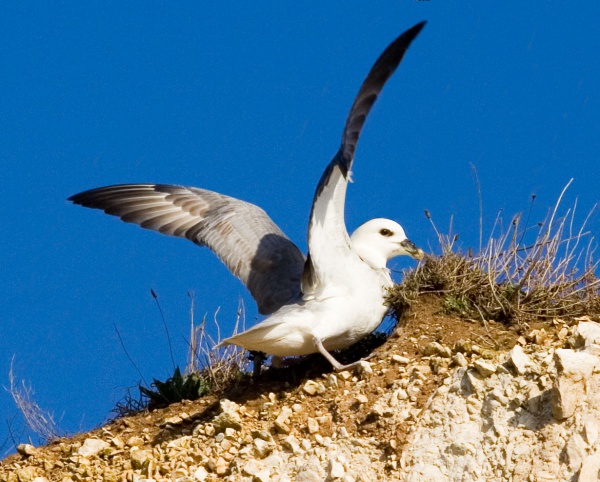Facts About Fulmar
Fulmars are captivating seabirds recognized for their rigid-winged flight and distinctive tube-shaped nostrils. They belong to the Procellariidae family, which comprises two extant species and two extinct fossil species from the Miocene era. Fulmars customarily breed on cliffs, where they lay a single egg, occasionally two, on bare rock or grassy ledges. Outside the breeding season, they traverse the open ocean, feeding on fish, squid, and shrimp. Remarkably, these birds can live up to 40 years.
Taxonomically, fulmars share several characteristics with other members of the Procellariidae family and the broader Procellariiformes order. These traits include nasal passages that connect to the upper bill and a uniquely structured bill. They also produce a special stomach oil, stored in the proventriculus, which they can eject as a defense mechanism. Additionally, fulmars possess a salt gland located above their nasal passages, which helps them regulate the salt content in their bodies.
The genus name "Fulmarus" is derived from Old Norse words: "fúll" meaning foul and "már" meaning gull, alluding to the strong odor of their stomach oil. The two extant species of fulmars are the northern fulmar (Fulmarus glacialis) and the southern fulmar (Fulmarus glacialoides). Although they inhabit different oceanic regions, they share many similar traits.
Both species breed on cliffs, where they lay a single white egg in shallow nests lined with vegetation. Unlike some other seabirds, fulmars are not nocturnal breeders and do not use burrows. They are pelagic feeders, meaning they hunt for fish, squid, shrimp, and other marine life in the open ocean. Over time, their range has expanded due to the availability of food, although climate change could impact this.
Historically, fulmars have been hunted for food, leading to population declines in heavily exploited areas. For example, their meat was once a staple for communities on the Isle of St Kilda. Interestingly, the fulmar population did not experience a significant increase when human inhabitants left St Kilda in 1930.
Fulmars are distinctive seabirds with unique traits and behaviors, playing crucial roles in their ecosystems. Despite past exploitation, their resilience and adaptability continue to make them a vital part of the marine environment.

 Ireland
Ireland